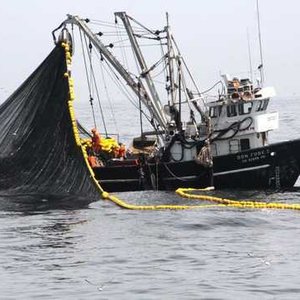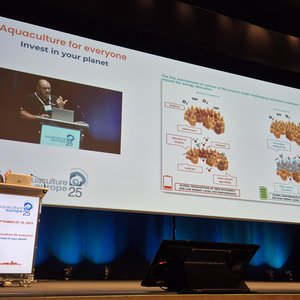A new study shows shrimp welfare could be improved if fed Calysta’s FeedKind® protein, with the feed ingredient significantly reducing early mortality syndrome (EMS) risk. The study on the effectiveness of Calysta’s single-cell protein as a shrimp feed ingredient by Kasetsart University showed a significant improvement in shrimp immune response to the disease, with survival rates of up to 100% after 15 days of exposure, compared to just 76.7% of those fed on a traditional fishmeal-based feed.
“Outbreaks of the disease remain one of the biggest challenges in aquaculture today. EMS, in particular, has caused more than $20 billion in losses to the shrimp industry over the last decade, and disease management and prevention is one of the industry’s highest priorities,” said Allan LeBlanc, vice president, aquaculture lead at Calysta. “FeedKind’s ability to activate shrimps’ innate immune system could be transformative for the industry. As a key ingredient in functional feeds, it can form the backbone of a comprehensive disease prevention strategy for farmers, all while improving animal health and increasing yield. With a growing global population and increasing demand for protein, being able to produce more food from less is crucial to helping us maximize existing resources and improve global food security.”
Study results
The study, carried out by Dr. Orapint at the Nutrition and Aquafeed Laboratory, Department of Aquaculture, Faculty of Fisheries, Kasetsart University, Bangkok, Thailand, said that “FeedKind does not inhibit growth performance, feed efficiency or survival of shrimp. Additionally, shrimp in this study demonstrated an increased tolerance to disease when challenged with Vibrio, indicating FeedKind protein may help promote a robust immune response.”
The FeedKind study tested Penaeus vannamei shrimp fed a variety of diets, from a control diet comprised of traditional fishmeal-based feed to diets with increasing quantities of FeedKind protein to replace the fishmeal at 33%, 66% and 100% – up to a total of 15% of feed.
Shrimp spent 15 days continuously exposed to the causative agent of EMS, Vibrio parahaemolyticus. All shrimp on the FeedKind-based diets showed greater survival rates compared to the fishmeal-based feed, from 76.7% in the control to 86.7% at 5% FeedKind, 96.7% in 10% FeedKind and 100% in the 15% concentration of FeedKind.
Results showed that fishmeal can be entirely replaced in shrimp diets with FeedKind. Additionally, the replacement of fishmeal with methanotroph bacteria meal protein, FeedKind, followed by a natural V. parahaemolyticus challenge led to improved survival.
Check out the study here.
Calysta’s 50/50 JV with Adisseo, Calysseo, is in the process of building the world’s first FeedKind commercial production facility in Chongqing, China, with the completion of the first 20,000 tons per year plant expected next year and expansion shortly thereafter.













